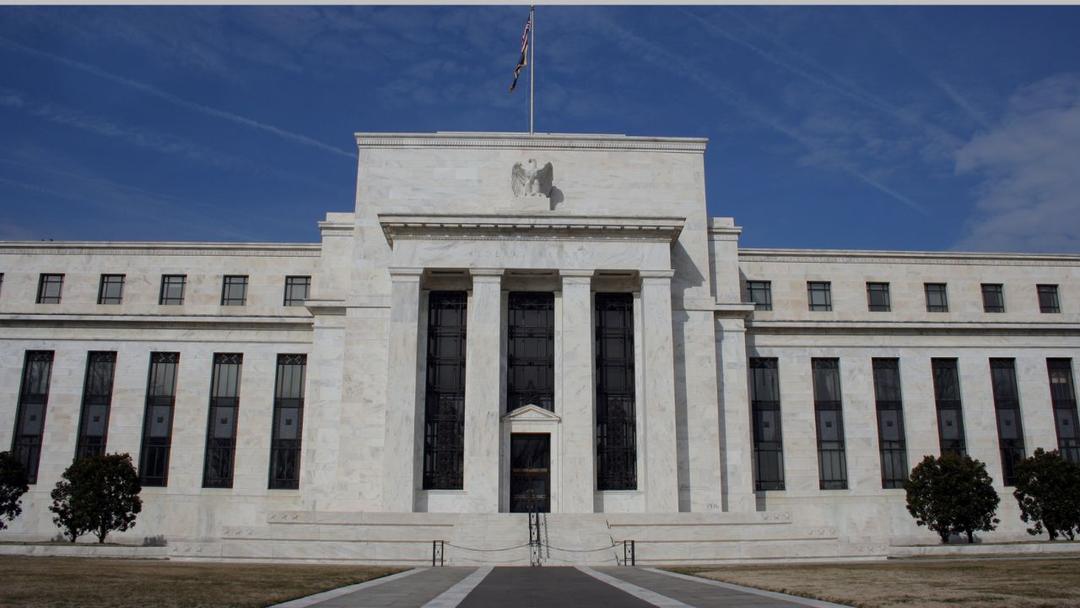US Fed hikes rate by 75 Bps hike
Posted by : Sheen Hitaishi | Sat Sep 24 2022

The year 2022. till now has been full of unexpected events, including severe market volatility, inflation that is at a decade-high, Adani Group overtaking Tata Group, and Gautam Adani becoming the third richest person in the world. Aside from all of this, the RBI has increased benchmark rates frequently during the course of this year in an effort to contain inflation in the face of a weakening rupee and a nearly zero liquidity surplus.
A common saying has it that when America sneezes, the rest of the world catches a cold. This is evident from the impact it had on the global equities, currencies, and commodities markets. The US Fed met on 20th September and as expected by the markets, hiked the interest rates.
The US Fed, which is the apex bank of the US whose decisions carry substantial importance globally, had a meeting 2 days back. The meeting concluded with the US Federal Reserve raising interest rates by 75 basis points for the third time this year. The goal of this unanimous decision was to maintain the benchmark federal rates near their desired range of 3% to 3.25%. This number has increased from almost zero at the start of 2022 to its greatest point since the 2008 Lehman Brothers Financial Crisis.
The aggressive rate hike by the Federal Reserve will put further pressure on the stock markets. When the interest rate is increased in the US the investors pull assets away from the emerging markets. Due to high interest rate capital flows more toward the American economy. So, let’s now decipher the effect of US Fed meeting rate hikes on Indian as well as global stock markets.
Forecasts say that the rate hike would reach 4.6% in 2023
For the past eight months, inflation in India has been above the top tolerance limit set by the central bank. However, there will be other factors at play when the monetary policy committee (MPC) might raise interest rates the following week, due to the US Fed decision. The value of the rupee has decreased this year due to both internal inflation and foreign devaluation against the US dollar. The twin issues have made it more difficult for the MPC to maintain financial stability in an unstable global environment and especially after this US Fed rate hike.
It should be noted that Inflation that persists for an extended length of time lowers the rupee by harming India’s economic growth and competitiveness, and inflation that results from a declining exchange rate is brought on by increasing import costs. India, which imports the majority of its crude oil, is particularly vulnerable to get caught in this loop of inflation and exchange rates.
In order to counter inflation, practically every central bank in both emerging and industrialised nations raised interest rates this year. Even as the world battles with concerns about an impending recession, the MPC may have no choice but to follow them as the rupee hovers close to the emotionally charged 80-mark. Therefore, the MPC will likely increase the repo rate for a fourth time in a row, by 35 to 50 basis points.
Even the Indian stock markets closed in red for 2 consecutive days amid severe volatility. FIIs can be seen as a high seller. Yesterday, markets fell by almost 50 Bps. USD/INR rate closed at an all-time low of 80.86/dollar.
“Indian markets reacted mainly to the US Federal Reserve’s hawkish undertone on interest rates that fuelled pessimism amongst the investors. As expected, banking stocks bore the brunt that led to extended correction in local benchmarks,” said Shrikant Chouhan, Head of Equity Research (Retail), Kotak Securities.
You may also like: Banking Sector reports decent Q1FY23 performance
World Markets
The stock markets fell after a choppy trading day. The S&P 500 index as a whole declined 66 points, or 1.7%, to 3789.93. According to Tradeweb, the yield on the two-year U.S. Treasury notes stabilised around 3.993% from 3.962% on Tuesday, close to a 15-year high. Immediately following the Fed’s statement, it reached a peak of 4.12%. In the meantime, longer-term Treasury yields decreased because rising rates could cause an even more severe economic downturn.
Yesterday, the NASDQ lost over 1.37%, followed by the SGX NIFTY and NIKKEI 225, both of which dropped more than 50 Bps.
Future Prospects: More hikes likely underway with slowdown in economic growth
In his address, US Fed Chairman Jerome Powell predicted two additional hikes, likely of 50 basis points each, before the end of the year and one more in the early months of 2023. The Fed is having trouble controlling inflation, which is hurting growth. Higher consumer demand is a result of the continued tightness in the wage market. The current situation makes the 2% inflation target seem a little out of reach, but the substantial increases will harm people, businesses, and ultimately consumer demand and economic growth. Technically the US is in a recession this quarter and the Fed is trying its best to come out of this situation.
The mortgage market, where the mortgage rate has doubled in the last 12 months, and the real estate values have started to fall, are the early indicators. The number of open positions is increasing, home sales have slowed, and a correction in the US housing market is imminent. Consumer credit is the other industry that suffers as a result of credit card rate increases.
The Indian economy is directly impacted by the US Federal Reserve interest rate action. High interest rate in the US will make Indian equities less attractive for foreign investors. It could lead to FIIs pulling out from India. It will also put further pressure on the Indian rupee. A weak rupee will make imports costlier leading to further widening in the current account deficit. The trade deficit may widen further. It may lead to prolong imported inflation forcing the RBI to go for an aggressive policy rate hike in its next MPC meet.
About the Author
Ketan Sonalkar (SEBI Rgn No INA000011255)
Ketan Sonalkar is a certified SEBI registered investment advisor and head of research at Univest. He is one of the finest financial trainers, with a track record of having trained more than 2000 people in offline and online models. He serves as a consultant advisor to leading fintech and financial data firms. He has over 15 years of working experience in the finance field. He runs Advisory Services for Direct Equities and Personal Finance Transformation.
Note – This channel is for educational and training purpose only & any stock mentioned here should not be taken as a tip/recommendation/advice
You may also like: Adani’s group’s market cap surpasses Tata group’s

Related Posts